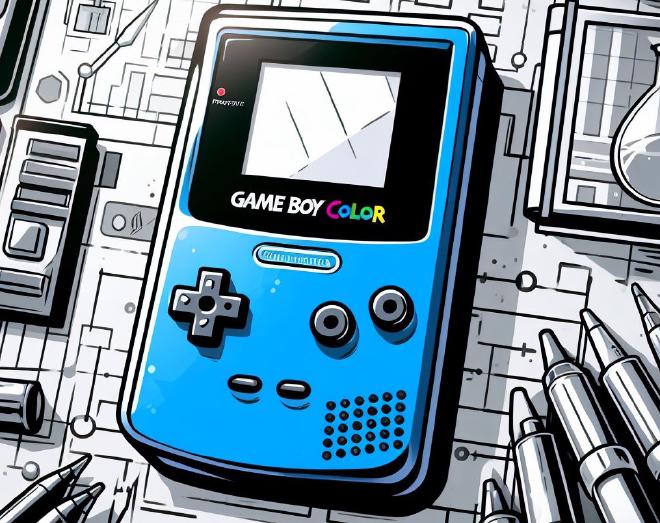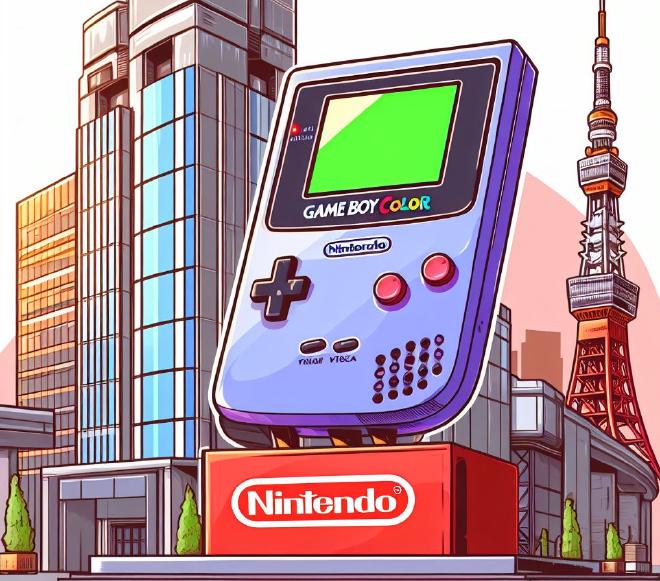The Game Boy Color

Table of Contents
Nintendo - This article is part of a series.
In 1998, Nintendo shook up the gaming world with the introduction of the Game Boy Color (GBC), a revamped version of the original Game Boy featuring a game-changing capability—the ability to display colors. This innovation marked a crucial moment in gaming history, firmly establishing the GBC as a beloved console for gamers of all ages. Join us as we explore the features, games, and impact of the Game Boy Color, uncovering why it remains an iconic piece of gaming hardware.
Design and Display #
The Game Boy Color’s design subtly evolved from its predecessor, with a few noteworthy changes. Sporting a sleeker and more streamlined body than the original Game Boy, the GBC became easier to hold and carry. However, the most significant update was the addition of a color display, a departure from the monochrome screen of the original. This vibrant display expanded the range of visuals and graphics, introducing a broader spectrum of colors to the gaming world. The inclusion of color not only enhanced the aesthetics but also elevated the gaming experience, bringing a new level of immersion to players.

Games #
The Game Boy Color’s library was filled with both new and updated versions of classic games from the original Game Boy era. Some of the most popular titles included:
- Pokémon: Gold and Silver – These two games were released exclusively for the GBC, introducing new Pokémon, areas, and gameplay mechanics to the beloved franchise.
- Super Mario Bros. Deluxe – This updated version of the classic platformer featured improved graphics, new power-ups, and a host of other enhancements.
- The Legend of Zelda: Oracle of Seasons and Oracle of Ages – These two games were also released for the GBC, offering a unique blend of action, adventure, and puzzle-solving gameplay.
- Wario Land II – This platformer featured a new protagonist, Wario, who was tasked with retrieving treasure from an ancient temple.
- Donkey Kong Country 2: Diddy’s Kong Quest – This side-scrolling platformer introduced new characters and levels to the original Donkey Kong Country gameplay.
Backward Compatibility #
The Game Boy Color’s backward compatibility with original Game Boy games was a masterstroke by Nintendo. It allowed gamers to seamlessly transition into the world of colors while still holding onto their beloved monochrome classics. This feature not only expanded the GBC’s game library but also served as a nostalgic bridge for long-time Game Boy enthusiasts. Gamers could experience their favorite titles in a new light, with added vibrancy and detail, showcasing the timeless appeal of classic games.

Impact #
The Game Boy Color may have been released over two decades ago, but its impact on the gaming industry is still felt today. Its colour display technology was a major innovation that set the stage for future handheld consoles, such as the Game Boy Advance and the Nintendo DS. The GBC’s library of games also continues to be enjoyed by retro gamers around the world, with many titles available on modern consoles through virtual console releases or emulation software.
GBC #
The Game Boy Color wasn’t just a handheld console; it was a revolutionary force in gaming history. Its vibrant display and rich game library left an enduring mark on the industry. Today, its legacy is alive and well, embraced by retro gamers worldwide. Whether you’re yearning for a nostalgic journey or a fresh gaming escapade, the Game Boy Color offers an unparalleled experience. So, what are you waiting for? Go grab your GBC, and let the lively gameplay whisk you away to a world of endless fun! Happy gaming!